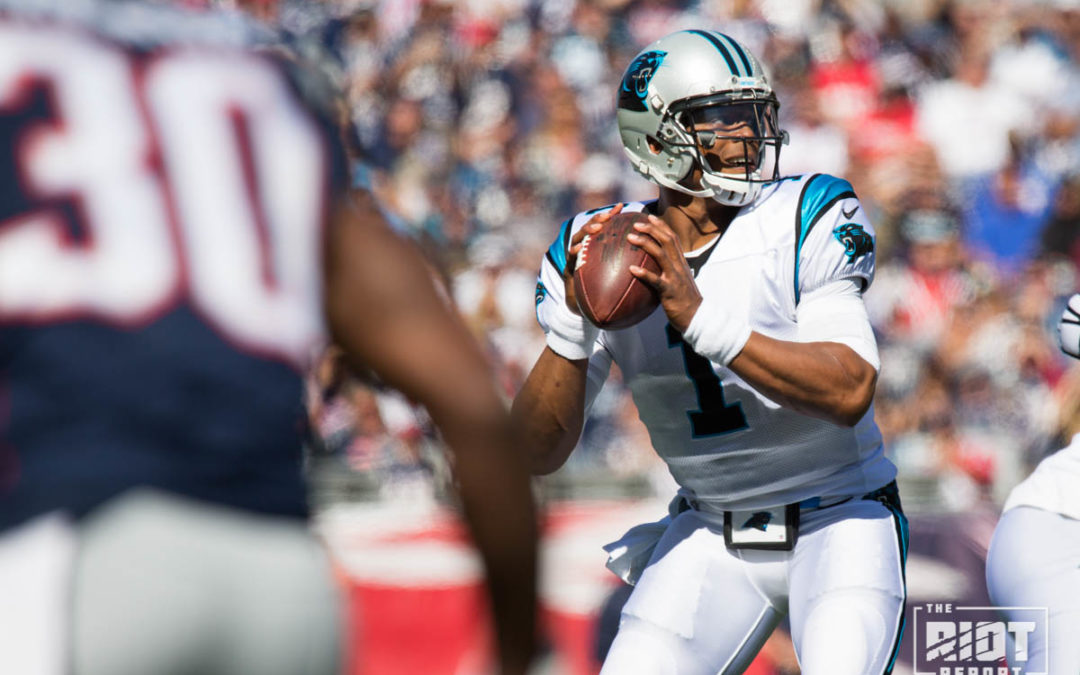The Panthers’ victory against the Patriots on Sunday was many things: unexpected, promising and, most relevant to this article, meticulous. It was not a performance dominated by long touchdowns and break-out runs but rather by a pair of teams methodically moving the ball down the field, albeit with occasional stumbles.
For the Panthers, this meant completing a season-high thirteen passes of between five and fifteen yards; more than in the 49ers and Saints games combined. This might seem like an arbitrary cut-off but it can be used as a way to demonstrate how effective a team’s short passing attack is which is important because while long passes are effective at generating touchdowns on an individual basis, consistent offensive production is highly reliant on the ability to consistently move the chains. This article looks to explore how the Panthers’s short passing attack was able to be so successful, and how it could continue to improve going forward.
Schemed Open
A major part of the argument for short passing in the NFL is the potential for yards after the catch, and no play type is a better example of this than screens. These plays run the risk of being blown-up due to the lack of available reads, but are very effective at getting the ball in the hands of the team’s play-makers.
On this play, the Panthers look to stretch the Patriots to the sidelines and then run a tunnel screen back inside to Shepherd. Plays like this test both a defense’s discipline in terms of assignments and their ability to make tackles in open space. On the following play, the Panthers use a play-action fake to generate the breakdown in defensive assignment before throwing the ball to McCaffrey as he breaks to the flat.
When they work well, these plays can be hugely effective as they pick up good yardage without having to risk longer throws. The downside is that they are heavily dependent on facing either a blitz or zone coverage, something which the quarterback is tasked with identifying pre-snap. This is a typical solution to attempt to scheme certain players the ball, but the lack of reads built into most screen plays and the shift in the offensive line generally makes them the most vulnerable to negative plays.
Another way in which the Panthers used play-design to generate plays on Sunday was their use of short play-action passes. The Panthers have struggled with play action plays early in the season, largely due their focus on using it to generate deeper plays down the field. While this did still happen a couple of times on Sunday, resulting in at least one sack; they also used it as a means of opening up underneath routes. On the following two plays, the Panthers use a run fake to draw the linebackers down and so open up the space behind them.
Twist and Shout
The ‘twist’ route concept was described in detail in an earlier piece, and was used effectively in several variant forms by the Panthers on Sunday. In brief, this concept works by running a running back swing route to the open side of the field, with the outside receiver running an inside route, typically a slant. This concept works by allowing the quarterback to read the outside linebacker and the outside corner and is effective against both man, zone, and blitz coverages. On the first two plays, the Panthers use the running back to draw the linebacker out to the flat and then throw the ball to the space he has vacated:
Content With Small Gains
Devin Funchess had one of the best games of his career against the Patriots on Sunday, and a major part of this was Cam’s willingness to target him repeatedly on short routes against man coverage. Funchess is an excellent route runner for his size and is able to generate quick separation, especially against off-coverage. On the following three plays, Funchess is lined up against a man who is off the line of scrimmage and Funchess is able to use a quick outwards break to allow for the short reception.
On this next play, the Panthers line McCaffrey up in the slot and get the ball in his hands against zone, allowing for run after the catch.
Plays like this are effective in themselves, but by forcing defenses to consistently defend the pass in a disciplined manner, the offense is able to force opposing defenses into mental errors, as was the case on Sunday. On of the best examples of this was on Funchess’ first touchdown.



